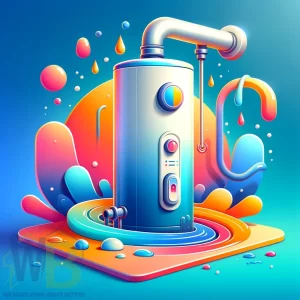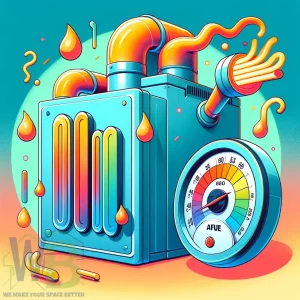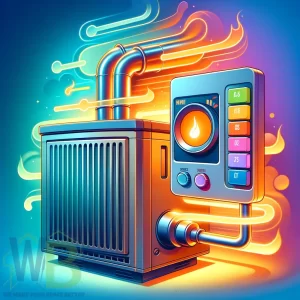HVAC stands for Heating, Ventilation, and Air Conditioning. It’s a system used in buildings like homes, condos, offices, and schools to make the air comfortable to breathe and to keep the temperature just right.
HVAC systems are important because they help ensure the air is clean, control the moisture in the air, and keep us warm in winter and cool in summer.
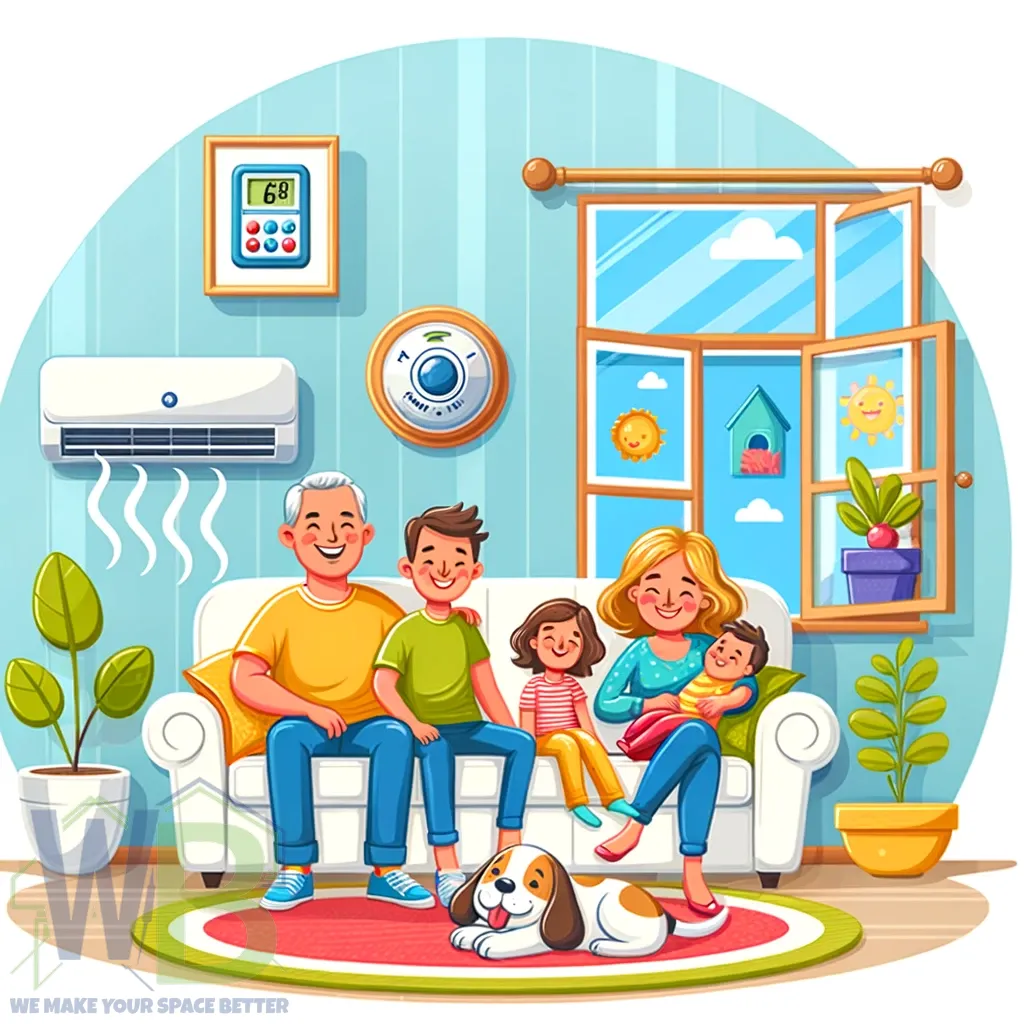
Quick Summary
| Section | Key Points and Answers |
|---|---|
| What is HVAC? | HVAC stands for Heating, Ventilation, and Air Conditioning, providing comfortable indoor temperatures and air quality. |
| History of HVAC | Started with Willis Carrier’s invention in 1902, evolving through the 20th century with advancements in cooling and heating technologies. |
| Components of an HVAC System | Includes thermostat, furnace, air conditioner, ductwork, vents, evaporator coils, condensing unit, refrigerant lines, filters, and humidifiers/dehumidifiers. |
| Heating (H in HVAC) | Provides warmth through a furnace, using a heat exchanger and burners, controlled by a thermostat. |
| Ventilation (V in HVAC) | Refreshes indoor air, controls moisture, and filters out particles for better air quality. |
| Air Conditioning (AC in HVAC) | Cools indoor air using evaporator coils and a condensing unit, with a thermostat for temperature control. |
| HVAC Functions | Controls indoor temperature, improves air quality, balances moisture, saves energy, and enhances comfort in living and working spaces. |
| Types of HVAC Systems | Includes split systems, hybrid systems, ductless mini-splits, and packaged heating and air conditioning systems. |
| Energy Efficiency | Modern systems have higher SEER ratings, use smart thermostats, eco-friendly refrigerants, and variable speed motors for better energy use. |
| Average Cost of an HVAC System | Depends on system type, home size, energy efficiency, installation complexity, and brand/features; costs vary from a few to several thousand dollars. |
| HVAC Lifespan | Lasts about 15-25 years, influenced by installation quality, system type, maintenance, usage, and climate. |
| Final Thoughts | HVAC systems are essential for comfort, air quality, and energy efficiency in homes and buildings. |
What Does HVAC Stand For?
HVAC is an acronym that breaks down like this:
- H for Heating: This system part keeps your space warm. It’s like having a big, invisible blanket that wraps around your house or building to keep everyone cozy when it’s cold outside.
- V for Ventilation: This means keeping the air fresh and clean. It’s like having a gentle breeze that constantly moves old air out and brings new air in, so you’re always breathing easily.
- AC for Air Conditioning: This part cools down the air when it’s hot outside. It works like a giant refrigerator for your whole building, giving you a cool escape from the summer heat.
History of HVAC
The story of HVAC is a journey through time filled with inventions that have shaped our comfort today. It started over a century ago with clever minds and groundbreaking ideas.
In 1902, Willis Carrier changed the game by inventing the first modern electrical air conditioning unit. Imagine this: a machine that moved air through water-cooled coils – a big leap for comfort! Fast forward to 1922, and Carrier did it again, creating the centrifugal chiller. This invention was like a superhero of cooling, making air conditioning more powerful and efficient.
Around the same time, something exciting happened at Buffalo Forge Company. They developed the first fan coil dehumidifying system and spray-style air conditioning. These technologies made the air feel cooler, more comfortable, and less humid.
The term “air conditioning” itself has a neat origin story. In 1906, Stuart Cramer coined this term, painting a picture of what these systems did – they conditioned the air for better living. By 1914, the first residential AC unit was installed, marking the start of a new era in home comfort.
The 1950s were the golden era for HVAC. This decade saw the widespread adoption of residential AC. Picture this: neighborhoods are transforming as more homes enjoy the luxury of controlled climates.
The invention of these HVAC components didn’t just happen in a vacuum. They were part of the larger industrial revolution, a time of rapid progress and innovation. This era pushed the boundaries of what was possible, leading to constant modernization, higher efficiency, and smarter system control.
Today, the HVAC industry hasn’t stopped evolving. It’s like a never-ending quest for perfection. Newer, more energy-efficient systems are being developed constantly, helping us live in greater comfort while being kinder to our planet.
Components of An HVAC System
An HVAC system is like a team, with each player having a unique role in keeping your home comfortable. Let’s meet the team members:
- Thermostat: This is the team captain. The thermostat tells the HVAC system when to start and stop based on your desired temperature.
- Furnace: This player is all about warmth. The furnace heats air and sends it through your home when it is cold outside.
- Air Conditioner: Working opposite the furnace, the air conditioner cools down the air on hot days.
- Ductwork: Think of ductwork as the roads that air travels on. It’s a network of tubes that carries heated or cooled air to different rooms.
- Vents: These are the gates where air enters your rooms. They can be adjusted to control how much air comes in.
- Evaporator Coils: These coils get cold in an air conditioner. When air passes over them, it cools down before entering your house.
- Condensing Unit: Attached to the air conditioner, this unit is usually outside. It gets rid of the heat removed from your air.
- Refrigerant Lines: These lines carry a special fluid that helps cool and heat the air.
- Filters: They clean the air by trapping things like dust and pollen.
- Humidifier/Dehumidifier: Depending on the need, these components either add or remove moisture from the air.
✅ Each part works together to create a comfortable home environment, ensuring the right air.
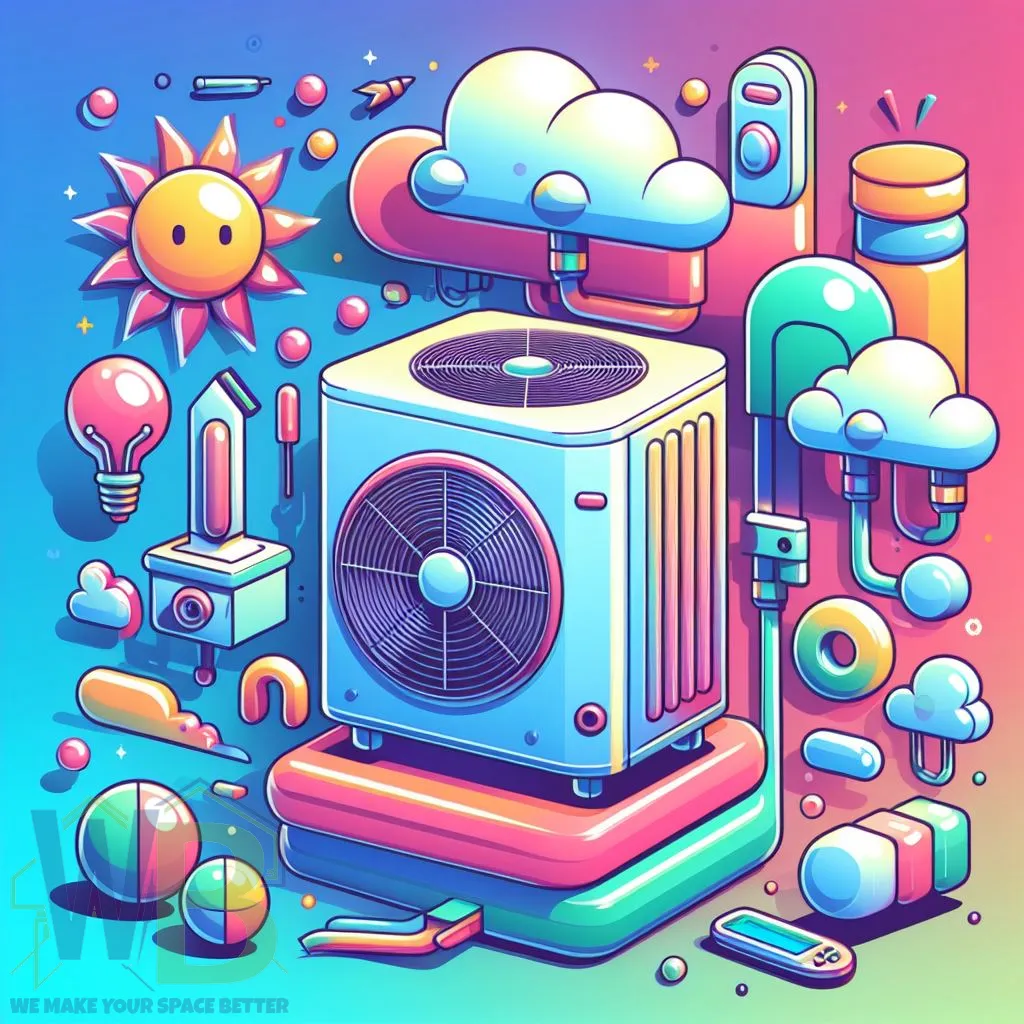
Heating (H in HVAC)
Heating is like a warm hug for your home. When it’s cold outside, the heating part of your HVAC system kicks in to keep you cozy. Here’s how it works:
- Furnace: This is the main heating device. It heats the air, which is then sent around your home.
- Heat Exchanger: Inside the furnace, the heat exchanger warms the air without mixing it with the combustion gases.
- Burners: They create combustion gases, which heat the exchanger.
- Flue: The flue is like a chimney. It safely gets rid of combustion gases outside your home.
- Thermostat: This is the control center. It tells the furnace how much heat is needed.
Ventilation (V in HVAC)
Ventilation is all about keeping the air fresh. It’s like giving your home a breath of fresh air. Ventilation does a few important things:
- Removes Stale Air: It removes old, stuffy air from the inside and brings in fresh air from the outside.
- Controls Moisture: It helps keep the right moisture level in the air so it’s not too dry or humid.
- Filters Air: Ventilation systems often have filters that clean the air by catching dust and other particles.
Air Conditioning (AC in HVAC)
Air conditioning is your cool companion during hot days. It works like this:
- Evaporator Coils: These coils get cold and chill the air passing over them.
- Condensing Unit: This part, usually outside, releases heat from your home’s air.
- Refrigerant Lines carry a cooling fluid between the evaporator coils and the condensing unit.
- Thermostat: Again, the thermostat controls the air conditioner, turning it on and off to keep the temperature just right.
HVAC Functions
When we ask, “What does HVAC do?” we look at how it keeps us comfortable. Here’s what HVAC systems do:
- Temperature Control: The most known job of HVAC is to keep the temperature just right, whether warming up or cooling down your space.
- Air Quality Improvement: HVAC systems help clean the air. They remove dust, allergens, and other particles, ensuring you breathe healthier air.
- Moisture Balance: They control humidity levels. This means the air isn’t too dry (which can be tough on your skin and respiratory system) or too damp (which can make your home feel stuffy and promote mold growth).
- Energy Efficiency: Modern HVAC systems are designed to use energy wisely, helping to lower utility bills and being kinder to the environment.
- Comfortable Living and Working Spaces: By doing all these things, HVAC systems create comfortable environments where we live, work, and play.
Types of HVAC Systems
Several types of HVAC systems are designed to fit different needs and spaces. Let’s look at the most common ones:
- Split Systems: These have two main parts, one outside (air conditioner or heat pump) and one inside (furnace and air handler). They’re popular in homes because they can easily fit into already-built spaces.
- Hybrid Systems: Similar to split systems, but with a bonus. They can switch between gas power, faster and warmer, and electric, more efficient and quieter. It’s like having a hybrid car that can switch between fuel types.
- Ductless Mini-Splits: Perfect for rooms or areas without ductwork. These have an outside condenser and inside air-handling units. Each room can have its unit, giving you more control over the temperature in different parts of your home.
- Packaged Heating and Air Conditioning Systems: These are compact and usually placed outside the home. They’re ideal for homes with limited space for indoor HVAC components.
Each type has its pros and cons, so choosing one that best fits your home and needs is important.
Energy Efficiency
In today’s world, energy efficiency is a big deal, especially regarding HVAC systems. Here’s how modern HVAC systems are becoming more energy-efficient:
- SEER Ratings: SEER stands for Seasonal Energy Efficiency Ratio. The higher the SEER rating, the more efficient the air conditioner. It’s like a car’s MPG (miles per gallon) rating but for your AC.
- Smart Thermostats: These are like the brains of an energy-efficient HVAC system. They learn your habits and adjust the heating and cooling to save energy when you’re not home.
- Eco-Friendly Refrigerants: New refrigerants that are less harmful to the environment are being used.
- Variable Speed Motors: These motors adjust their speed to provide precise cooling and heating, which saves energy compared to motors that only run at full power.
- Regular Maintenance: Maintaining an HVAC system is key to energy efficiency. It’s like taking your car for regular check-ups to keep it running smoothly.
By choosing an energy-efficient HVAC system, you’re not just saving money on bills; you’re also helping the planet.
Average Cost of An HVAC System
When installing an HVAC system, one of the big questions is: How much will it cost? The answer isn’t simple because it depends on several factors, but here’s a general idea:
- System Type: Different systems come with different price tags. For example, a ductless mini-split system might be more affordable than a full central air system.
- Home Size: The larger your home, the more powerful (and often more expensive) the system you’ll need.
- Energy Efficiency: Higher efficiency systems tend to cost more upfront but can save you money on energy bills in the long run.
- Installation Complexity: The cost can vary depending on how easy or difficult it is to install the system in your home. Older homes or homes without existing ductwork might need more work.
- Brand and Features: Prices can also vary based on the brand and any additional features you choose, like smart thermostats or air purifiers.
On average, you might be looking at anywhere from a few thousand to several thousand dollars. It’s a big investment, but it’s important for your comfort and your home’s value.
HVAC Lifespan
Understanding an HVAC system’s lifespan is crucial when investing in one. Generally, how long an HVAC system lasts depends on several factors:
- Quality of Installation: A well-installed system can last longer. It’s like building a strong foundation for a house.
- System Type: Different types have different lifespans. For example, furnaces can last up to 20 years, while central air conditioners might have a shorter lifespan.
- Maintenance: Regular maintenance, like cleaning and inspections, can greatly extend the life of your HVAC system.
- Usage: The more you use it, the more wear and tear it experiences. It’s similar to how a car’s lifespan depends on how much it’s driven.
- Climate: Systems in areas with extreme weather may have a shorter lifespan due to harder workloads.
On average, a well-maintained HVAC system should last about 15-25 years. Knowing this can help you plan for future replacements and maintenance.
Definition of HVAC – Final Thoughts
HVAC means Heating, Ventilation, and Air Conditioning. It’s really important in our homes and buildings. It does more than just make us warm or cool. It also makes the air better to breathe, controls moisture, and comforts us.
HVAC systems have changed a lot over time. They are now much better at saving energy. This article discussed the parts of HVAC systems, their types, and what they do. We also looked at how much they cost and how long they last.
A good HVAC system is a smart choice for your comfort and home. Taking care of it helps it work well for a long time. If you’re thinking about getting a new system or fixing an old one or just want to know more about them, we hope this article was useful.

